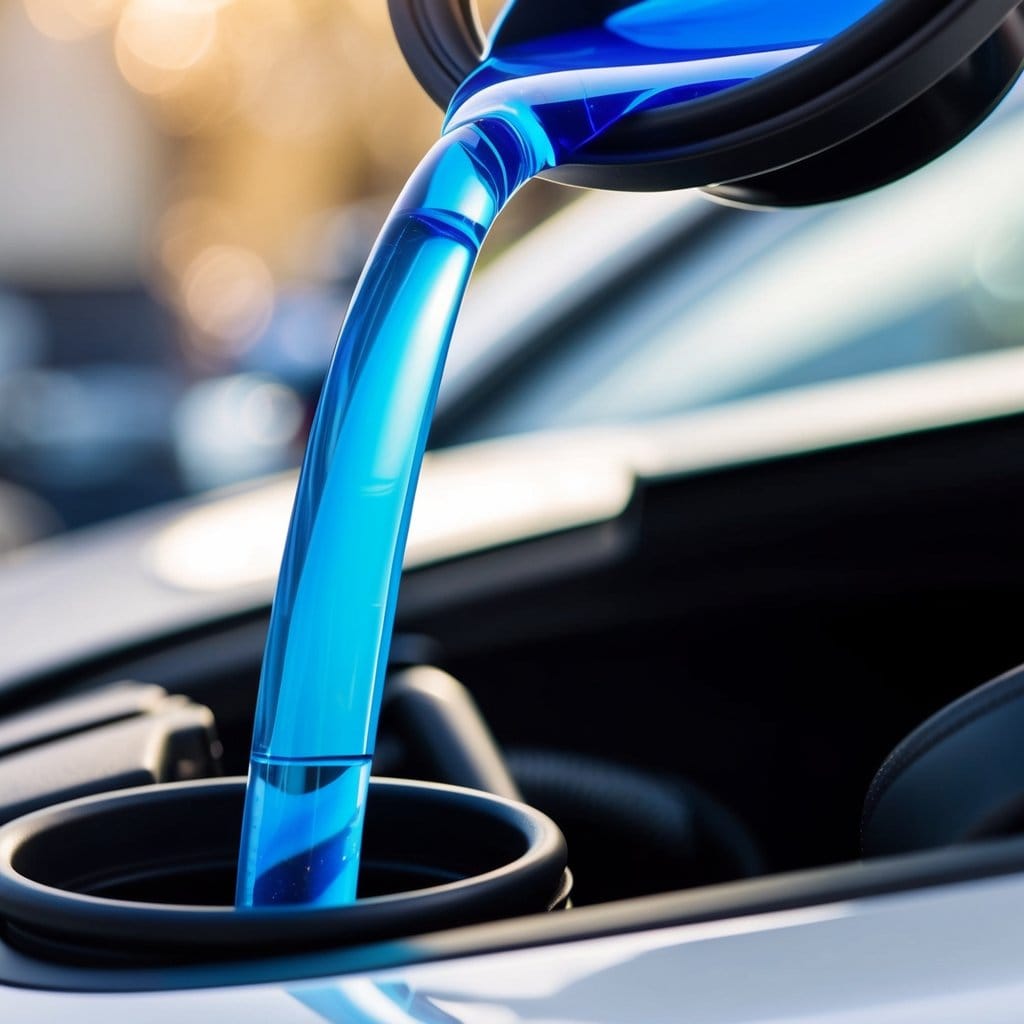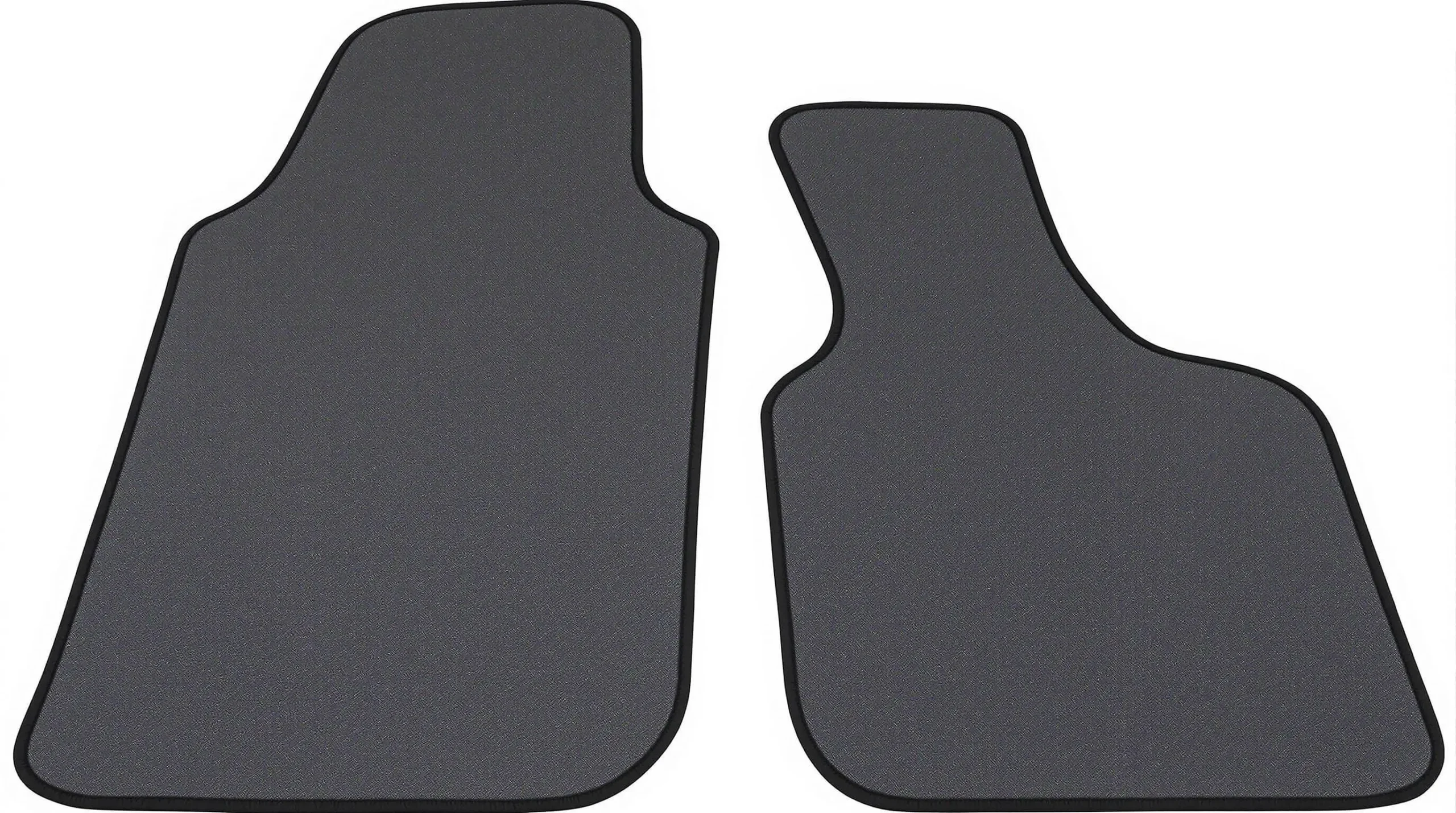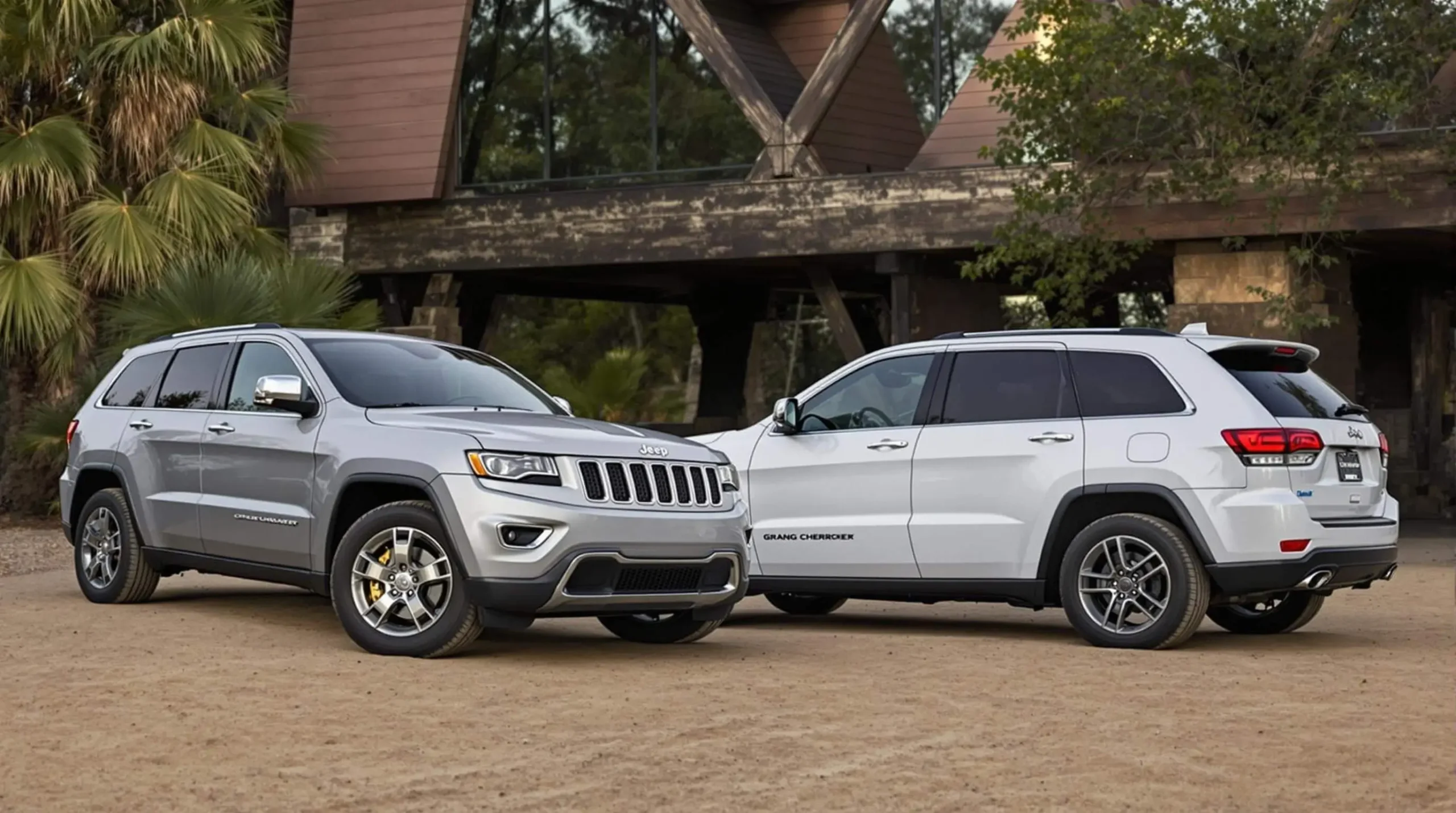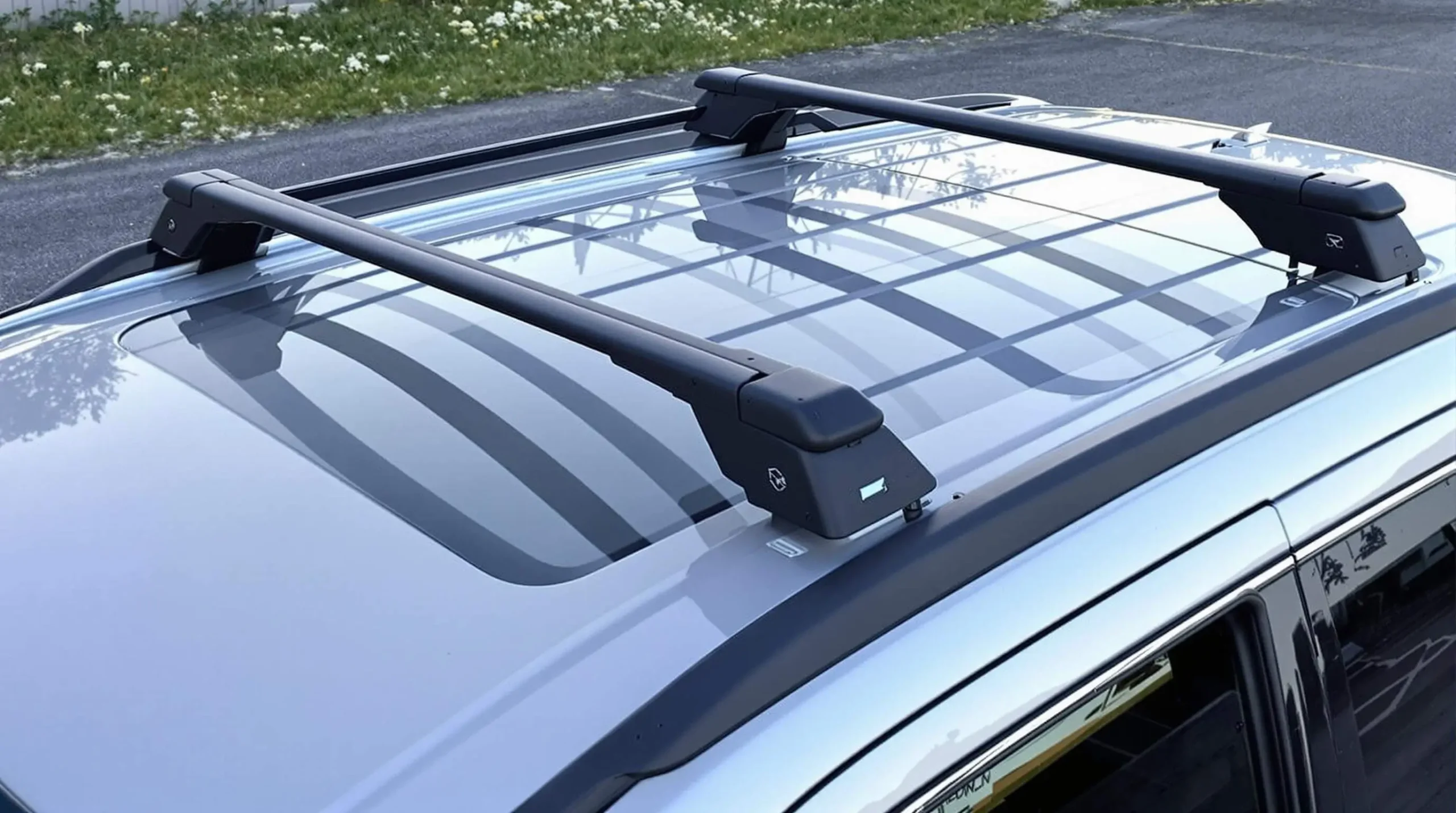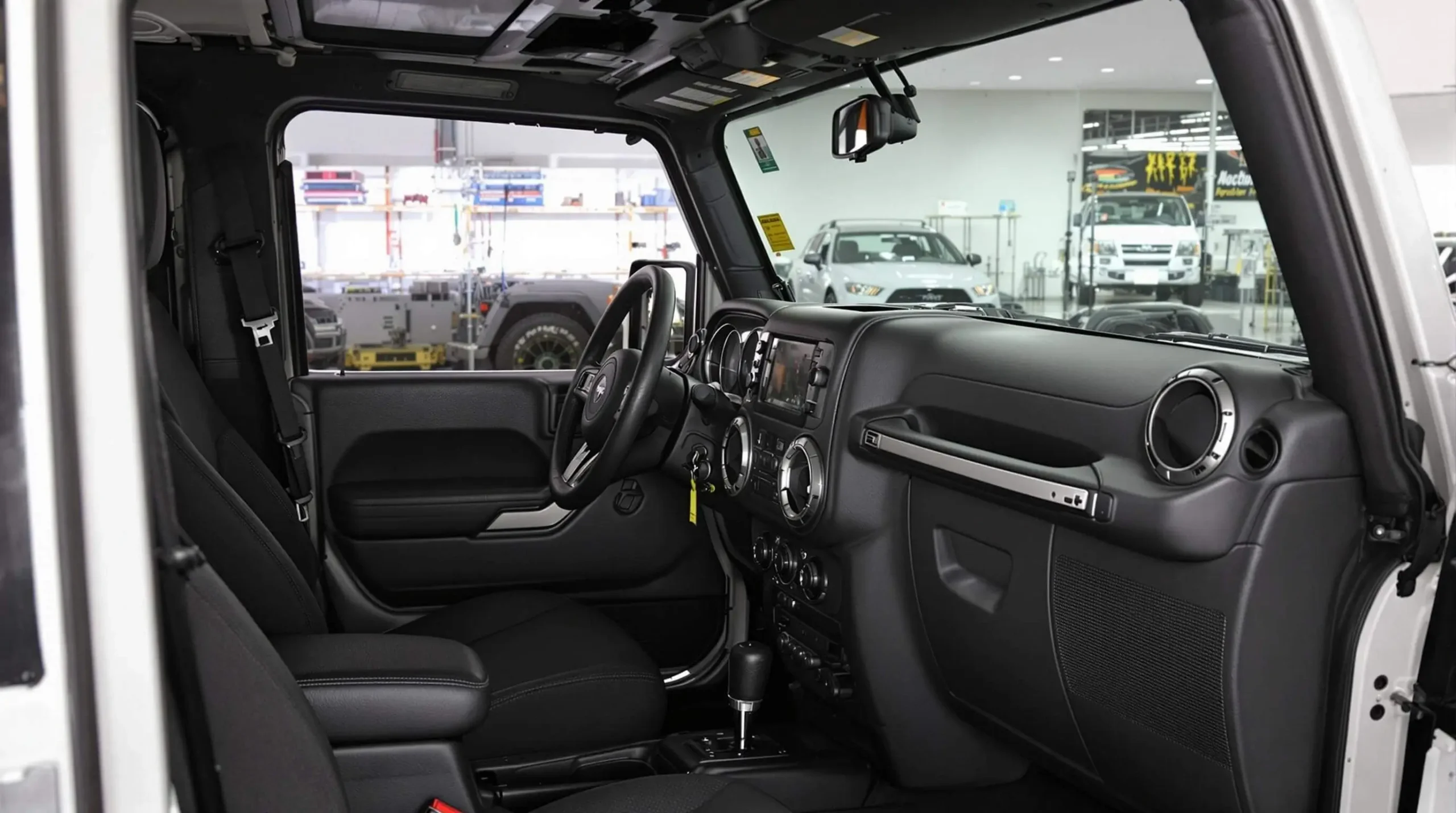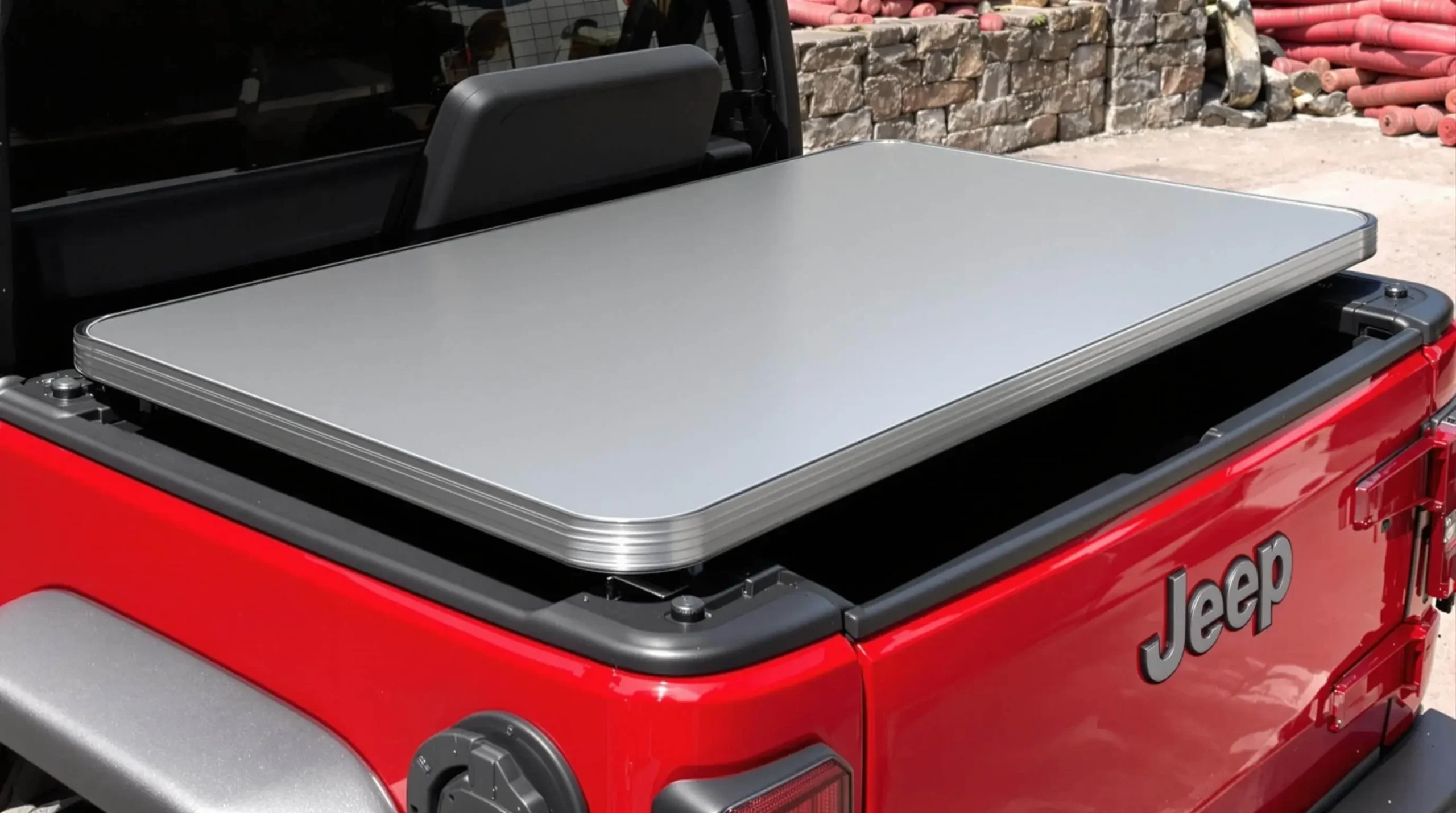2014 Jeep Grand Cherokee Boot Loop Fix: Your Complete Repair Guide
This comprehensive guide to the 2014 Jeep Grand Cherokee Boot Loop Fix combines technical insights with proven solutions to help you resolve this frustrating electrical issue permanently.
Have you ever turned the key in your 2014 Jeep Grand Cherokee only to watch your dashboard light up, shut down, and repeat in an endless cycle? This frustrating phenomenon, known as a “boot loop,” leaves countless Grand Cherokee owners stranded and confused. But what exactly causes this electronic nightmare, and more importantly, how can you fix it without breaking the bank?
Key Takeaways
| Issue | Primary Causes | DIY Difficulty | DIY Cost | Professional Cost | Success Rate | Time Investment |
|---|---|---|---|---|---|---|
| Boot Loop | TIPM Failure | Easy to Advanced | $0-$650 | $150-$1,200 | 80-95% | 30 min – 6 hrs |
| PCM/ECU Issues | Intermediate to Advanced | $50-$300 | $300-$1,000 | 70-90% | 2-4 hrs | |
| Ground/Wiring Problems | Easy to Intermediate | $0-$100 | $150-$400 | 70-85% | 1-3 hrs | |
| Battery/Charging Issues | Easy | $0-$200 | $100-$350 | 90-95% | 30 min – 2 hrs |
The 2014 Jeep Grand Cherokee Boot Loop Fix: Why Owners Search for Help
When Jeep owners search for help with boot loop issues, they typically use terms like “2014 Jeep Grand Cherokee won’t stay running,” “Jeep keeps restarting,” or “Grand Cherokee dashboard cycling.” These searches all point to the same core problem: an electrical system failure causing the vehicle to continuously attempt to restart itself.
Grand Cherokee Electrical Architecture: The Foundation of Boot Loop Issues
The 2014 Jeep Grand Cherokee features a complex electrical system built around several key components. At the heart of this system is the Totally Integrated Power Module (TIPM), essentially the vehicle’s electrical command center. The TIPM distributes power throughout the vehicle, controlling everything from engine starting to interior lighting.
This power module communicates with other control units like the Powertrain Control Module (PCM) and Engine Control Unit (ECU) via a Controller Area Network (CAN) bus system. Think of the CAN bus as the vehicle’s nervous system, sending electrical signals between components.
When functioning properly, this sophisticated network ensures your Grand Cherokee runs smoothly. Unfortunately, design weaknesses in the 2014 model year, particularly in the TIPM, created vulnerabilities that often manifest as boot loop issues. Understanding this architecture helps explain why a failing TIPM can affect so many seemingly unrelated vehicle systems simultaneously.
The Grand Cherokee’s electrical system also includes multiple ground points throughout the chassis, power distribution centers, and numerous control modules for specific functions. Any disruption in this complex network can potentially trigger a boot loop condition, though the TIPM remains the most common culprit.
Boot Loop Symptoms by Severity and System
Recognizing boot loop symptoms early can save you significant time and money in diagnosis and repairs. These symptoms typically appear in a progression, starting with subtle indicators before developing into the full-blown cycling issue.
Early Warning Signs
Before experiencing a complete boot loop, you may notice intermittent electrical oddities:
- Brief dashboard flickering
- Radio or infotainment system resetting unexpectedly
- Power windows operating slower than normal
- Headlights momentarily dimming
- Check engine light appearing and disappearing
Primary Boot Loop Symptoms
When the condition fully develops, you’ll experience these unmistakable signs:
- Dashboard lights repeatedly turning on and off in a cycle
- Engine attempting to start then immediately shutting down
- Clicking sounds from the engine compartment or dashboard
- Complete power cycling of the entire vehicle
- Inability to maintain a running engine
System-Specific Symptoms
The boot loop affects various vehicle systems differently:
Electrical System:
- Erratic voltage readings on the dashboard
- Battery warning lights cycling on and off
- Power accessories functioning inconsistently
Engine and Powertrain:
- Engine cranking but failing to stay running
- Transmission failing to engage
- Shifting issues when the vehicle does manage to run
Infotainment and Comfort Systems:
- UConnect system continuously rebooting
- Climate control cycling on and off
- Power seat and mirror memory settings resetting
Lighting Systems:
- Headlights flashing or changing intensity
- Interior lighting flickering
- Turn signals operating erratically
The severity and combination of these symptoms can help pinpoint the exact cause of your Grand Cherokee’s boot loop issue.
Diagnostic Trouble Codes Associated with Boot Loop
Connecting an OBD-II scanner to your Grand Cherokee will likely reveal specific trouble codes that can guide your diagnosis. These digital clues significantly narrow down potential causes and appropriate fixes.
Common TIPM-Related Codes
- P0685: ECM/PCM Power Relay Control Circuit
- P0688: ASD Relay Sense Circuit High
- P0691: Cooling Fan 1 Control Circuit Low
- P0692: Cooling Fan 1 Control Circuit High
- U0100: Lost Communication with ECM/PCM
- U0101: Lost Communication with TCM
PCM/ECU-Related Codes
- P0606: ECM/PCM Processor Fault
- P0607: Control Module Performance
- P0638: Throttle Actuator Control Range/Performance
- P0641: 5-Volt Reference 1 Circuit
Battery and Charging System Codes
- P0562: System Voltage Low
- P0563: System Voltage High
- P0643: Sensor Reference Voltage Circuit
Ground and Wiring Codes
- P0513: Invalid SKIM Key
- P0571: Brake Switch 1 Circuit
- P0700: Transmission Control System Malfunction
Remember that codes should be used as starting points for further investigation, not definitive diagnoses. Always verify with physical inspection and testing.
Comprehensive Diagnosis: Tools and Alternatives
Properly diagnosing your Grand Cherokee’s boot loop requires some diagnostic tools, but you don’t necessarily need expensive professional equipment for initial assessment.
Essential Diagnostic Tools
- OBD-II Scanner: The most important tool for identifying trouble codes. Basic models start around $30, while more advanced scanners with Jeep-specific capabilities range from $100-$300.
- Digital Multimeter: Used for testing voltage, continuity, and resistance throughout the electrical system. Available for $15-$100 depending on features.
- Circuit Tester: A simple tool for checking if power is reaching specific components. Basic testers cost $5-$15.
Budget-Friendly Alternatives
- Smartphone OBD-II Adapters: Bluetooth or Wi-Fi adapters paired with free apps can provide basic code reading functionality for $10-$30.
- Battery Maintenance Tool: A simple battery tester can help rule out battery issues for $5-$20.
- Visual Inspection: Many wiring and connector problems can be identified through careful visual inspection at no cost.
Diagnostic Process Workflow
- Basic Health Check:
- Check battery voltage (should be 12.6V when off, 13.7-14.7V when running)
- Inspect battery terminals for corrosion
- Check primary ground connections for tightness and corrosion
- Inspect visible wiring for damage
- Code Reading:
- Connect OBD-II scanner
- Record all trouble codes
- Clear codes and see which return immediately (these are active issues)
- Specific System Testing:
- Test TIPM fuses with multimeter or test light
- Check voltage at key TIPM connections
- Test continuity of suspicious ground connections
- Verify sensor inputs if indicated by trouble codes
- Load Testing:
- Activate various electrical systems to see if they trigger the boot loop
- Monitor battery voltage during cranking
- Check for voltage drops under load
These diagnostic approaches provide a structured path to identifying your specific boot loop cause without requiring dealership-level equipment.
Root Cause Identification Flowchart
To determine the most likely cause of your Grand Cherokee’s boot loop, follow this diagnostic decision tree:
- Does the vehicle show any signs of life?
- No: Check battery and primary power connections
- Yes: Continue to next step
- Does the vehicle attempt to start but immediately dies?
- Yes: Likely TIPM, PCM, or fuel delivery issue
- No: Continue to next step
- Do multiple electrical systems cycle simultaneously?
- Yes: Likely TIPM or power distribution issue
- No: Possibly isolated system failure
- Do you have communication with the OBD-II port?
- No: Check fuses, TIPM, or CAN bus issues
- Yes: Record diagnostic trouble codes
- Do you have TIPM-related codes?
- Yes: Focus on TIPM diagnosis and repair
- No: Check for PCM, ground, or wiring-related codes
- Does the problem occur only when warm or cold?
- Only when warm: Possible solder joint or connection issue
- Only when cold: Potential battery or starter issue
- Always: Likely a critical component failure
- Does disconnecting the battery for 15+ minutes temporarily resolve the issue?
- Yes: Likely a module programming or memory issue
- No: Probable hardware failure
By following this flowchart, you can systematically narrow down the causes and determine which solution path is most appropriate for your specific situation.
Beginner Solutions: No-Tool Approaches
Before investing in parts or expensive repairs, try these simple fixes that have resolved boot loop issues for many Grand Cherokee owners:
Battery Reset Procedure
- Disconnect the negative battery terminal
- Turn the headlight switch to ON position (to drain residual power)
- Wait 15-30 minutes
- Reconnect the battery terminal
- Test the vehicle
This basic reset clears temporary memory issues and has a surprisingly high success rate with intermittent boot loop problems.
Key Cycle Procedure
- Insert key and turn to RUN position (not START)
- Wait 5-10 seconds
- Turn back to OFF
- Repeat this cycle 10 times
- On the 10th cycle, attempt to start the vehicle
This procedure can sometimes reset the security system and communication between modules.
Fuse Reseating
- Locate the main fuse box (under the hood) and TIPM
- Identify and carefully remove each fuse related to ignition and starting
- Inspect for corrosion or damage
- Clean contacts if necessary
- Firmly reseat each fuse
- Test the vehicle
Loose connections within the fuse box commonly cause intermittent electrical issues that can mimic boot loop symptoms.
Ground Connection Cleaning
- Locate the main ground points (engine to chassis, battery to chassis)
- Loosen the connections
- Clean with a wire brush until shiny
- Apply dielectric grease
- Retighten securely
- Test the vehicle
Poor ground connections are often overlooked but can cause numerous electrical issues including boot loop symptoms.
These no-cost, no-tool approaches have resolved boot loop issues for approximately 20-30% of affected Grand Cherokee owners, making them well worth trying before moving to more complex solutions.
Intermediate Solutions: TIPM-Focused Repairs
If basic approaches don’t resolve your boot loop issue, these intermediate TIPM-focused repairs offer a higher success rate without requiring complete replacement.
TIPM Fuse Diagnosis and Replacement
The TIPM contains numerous fuses that can cause boot loop symptoms when failed. Particularly problematic are:
- Fuse M6: Controls the ASD (Auto Shutdown) relay
- Fuse M7: Powers the PCM and ignition system
- Fuse M14: Controls fuel pump operation
- Fuse M36: Powers the Transmission Control Module
To perform fuse diagnosis:
- Locate and open the TIPM (under hood, black box with multiple connectors)
- Remove the cover carefully
- Use a multimeter to test each fuse for continuity while installed
- Replace any failed fuses with identical amperage ratings
- Clean any corrosion in fuse sockets
- Reseat all fuses firmly
- Reinstall cover securely
TIPM Relay Repair
Failed relays within the TIPM are common boot loop culprits. The fuel pump relay is particularly problematic in the 2014 Grand Cherokee.
For relay testing:
- Identify the relay position within the TIPM (refer to cover diagram)
- Listen for clicking sound when key is turned to RUN position
- If no click is heard, the relay may be failed
- For advanced users: carefully remove relay and test with multimeter
- Replace failed relay with identical part
Some owners have successfully soldered new relays directly to the TIPM circuit board, though this requires electronic repair skills.
TIPM Connector Service
Poor connections between the TIPM and vehicle wiring harness can cause intermittent boot loop issues:
- Disconnect the battery
- Locate and disconnect all TIPM connectors
- Inspect for corrosion, bent pins, or damage
- Clean connectors with electrical contact cleaner
- Apply dielectric grease to connections
- Firmly reconnect all connectors
- Reconnect battery and test
This connection service has resolved approximately 15-20% of boot loop cases in 2014 Grand Cherokees.
TIPM Reset Procedure
This more advanced reset procedure can resolve software-related TIPM issues:
- Disconnect battery negative terminal
- Remove TIPM-related fuses (M6, M7, M14, M36)
- Press brake pedal for 30 seconds to drain capacitors
- Wait 15 minutes
- Reinstall fuses
- Reconnect battery
- Perform key cycle procedure described in beginner solutions
- Start vehicle
This comprehensive reset forces all modules to reestablish communication and has proven successful in cases where simpler resets failed.
Intermediate Solutions: Alternative Causes and Fixes
While the TIPM is the most common boot loop culprit, several other systems can cause identical symptoms. These intermediate solutions address these alternative causes.
Ground Circuit Repairs
Poor ground connections between the engine and chassis can cause voltage fluctuations that trigger boot loop conditions:
- Locate the main ground strap between engine and firewall
- Check for corrosion, fraying, or loose connections
- Clean connection points with wire brush
- Replace the ground strap if damaged ($15-30 part)
- Add supplemental ground straps for improved reliability
Many Grand Cherokee owners have found that adding an additional ground strap between the engine and chassis completely resolves boot loop issues.
Key Fob Programming Reset
The 2014 Grand Cherokee’s SKREEM (Sentry Key Remote Entry Module) can sometimes conflict with the ignition system:
- Enter the vehicle with all key fobs
- Insert one key into ignition
- Turn to RUN position (not START)
- Wait 5-10 seconds, then turn OFF
- Repeat with each key fob
- On final cycle, leave in RUN for 30 seconds
- Test starting
This reprogramming procedure forces the security system to recognize all keys properly and has resolved boot loop issues in vehicles where security system conflicts were the root cause.
PCM Connection Service
Poor connections to the Powertrain Control Module can mimic TIPM-related boot loop symptoms:
- Locate the PCM (typically on passenger side of engine compartment)
- Disconnect all connectors after marking their positions
- Inspect for corrosion or damage
- Clean with electrical contact cleaner
- Apply dielectric grease
- Firmly reconnect all connectors
- Test vehicle
This service addresses a less common but still significant cause of boot loop issues.
Fuel Pump Circuit Bypass
When the TIPM’s fuel pump circuit fails but the rest of the module is functional, a bypass can be an effective solution:
- Purchase a fuel pump relay bypass kit ($30-60)
- Follow kit instructions to install bypass wiring
- Connect to constant power source
- Install inline fuse for protection
- Test fuel pump operation
- Verify vehicle starts and runs properly
This targeted fix addresses a specific TIPM weakness without requiring complete replacement, saving hundreds of dollars.
These intermediate solutions target the most common alternative causes of boot loop issues in the 2014 Grand Cherokee, offering cost-effective fixes when the TIPM isn’t the sole problem.
Advanced Solutions: Complete TIPM Replacement
When intermediate solutions fail to resolve boot loop issues, complete TIPM replacement may be necessary. This advanced repair requires careful part selection and installation procedures.
TIPM Sourcing Options
You have several options when purchasing a replacement TIPM:
New OEM TIPM ($450-650)
- Benefits: Factory quality, fully updated, often includes warranty
- Drawbacks: Highest cost, may need dealer programming
Remanufactured TIPM ($250-450)
- Benefits: Tested and repaired unit, cheaper than new, usually includes warranty
- Drawbacks: Varies in quality between suppliers, may have limited lifespan
Used TIPM ($150-300)
- Benefits: Lowest cost, potentially available locally
- Drawbacks: Unknown condition, may transfer problems, no warranty
Repaired Original TIPM ($200-350)
- Benefits: No need to transfer programming, familiar with vehicle
- Drawbacks: Requires sending unit out for repair, vehicle down during service
TIPM Compatibility Factors
When selecting a replacement TIPM, ensure compatibility by matching:
- Part number (typically beginning with P68)
- Vehicle production date
- Engine type (V6 vs. V8)
- Optional equipment configurations
Using an incompatible TIPM can cause more problems than it solves.
TIPM Replacement Procedure
- Disconnect battery negative terminal
- Locate TIPM under hood (large black box with multiple connectors)
- Carefully document all wire harness positions with photos
- Remove TIPM cover and fuses
- Label and disconnect all electrical connectors
- Remove mounting hardware
- Remove old TIPM
- Install new TIPM in reverse order
- Reconnect battery
- Perform reset procedure
- Test all vehicle systems
TIPM Programming Considerations
The 2014 Grand Cherokee TIPM may require programming after replacement:
If using identical part number:
- Basic functions should work without programming
- Security features may need dealer synchronization
If using different part number:
- Will require dealer programming ($150-300)
- May need SKIM security system synchronization
Some independent shops now offer TIPM programming services at lower costs than dealerships.
Post-Replacement Testing
After replacing the TIPM, thoroughly test:
- Starting and running stability
- All electrical accessories
- Lighting systems
- Climate control
- Infotainment system
- Transmission shifting
- Security features
A properly replaced and programmed TIPM should completely resolve boot loop issues and restore all vehicle functions.
Advanced Solutions: PCM and ECU Interventions
In cases where TIPM replacement doesn’t resolve boot loop issues, the problem may lie in the Powertrain Control Module (PCM) or Engine Control Unit (ECU). These advanced solutions address these more complex causes.
PCM/ECU Software Updates
Outdated software can sometimes cause communication issues that trigger boot loop conditions:
- Check for Technical Service Bulletins (TSBs) related to PCM/ECU updates
- Visit a dealership or qualified independent shop with programming capabilities
- Request software version check
- Update to latest software version if available
- Perform system relearning procedures after update
Software updates cost approximately $150-300 at dealerships but can resolve persistent boot loop issues when hardware is functioning properly.
PCM/ECU Hardware Replacement
When the control modules themselves fail, replacement may be necessary:
New PCM ($300-600 plus programming)
- Purchase compatible PCM (verify with VIN)
- Professionally install to avoid damage
- Have professionally programmed with vehicle-specific data
- Perform relearning procedures
Used/Remanufactured PCM ($150-350 plus programming)
- Source compatible used unit
- Verify condition and warranty
- Install following proper procedures
- Have professionally programmed
These complex replacements typically require professional installation for successful results.
CAN Bus Network Diagnosis and Repair
Communication problems in the CAN bus network can cause modules to trigger boot loop conditions:
- Use advanced scanner to check for CAN bus communication errors
- Test resistance between CAN bus wires (should be approximately 60 ohms)
- Check for damaged wiring in commonly problematic areas:
- Under dash near steering column
- Near firewall pass-through
- Around TIPM connections
- Repair damaged wiring using proper automotive-grade wire
- Install terminating resistors if necessary
CAN bus issues are complex but increasingly common causes of boot loop conditions in modern vehicles like the 2014 Grand Cherokee.
Security System Bypass
In rare cases where boot loop is caused by security system failures:
- Consult a professional automotive locksmith
- Consider security system bypass options
- May require specialized equipment and expertise
- Typically costs $200-400
These advanced interventions address the most complex causes of boot loop issues and should only be attempted after ruling out simpler causes or with professional assistance.
Cost-Benefit Analysis by Solution Approach
Understanding the costs, difficulty, and success rates of different solutions helps you choose the most efficient approach for your situation.
Beginner Solutions
Battery Reset and Key Cycle Procedures
- Cost: $0
- Time investment: 30 minutes
- Success rate: 20-30%
- Longevity if successful: Often temporary (weeks to months)
- Risk factor: None
- Recommendation: Always try these first
Fuse Reseating and Ground Cleaning
- Cost: $0-10 (optional cleaner)
- Time investment: 1-2 hours
- Success rate: 15-25%
- Longevity if successful: 6 months to permanent
- Risk factor: Very low
- Recommendation: Excellent second step
Intermediate Solutions
TIPM Fuse and Relay Repairs
- Cost: $20-100 for parts
- Time investment: 2-4 hours
- Success rate: 30-40%
- Longevity if successful: 1-5 years
- Risk factor: Low to moderate
- Recommendation: Good value for moderate DIYers
Ground and Connection Repairs
- Cost: $15-50 for parts
- Time investment: 2-3 hours
- Success rate: 20-30%
- Longevity if successful: Usually permanent
- Risk factor: Low
- Recommendation: Excellent cost-benefit ratio
Fuel Pump Bypass
- Cost: $30-60 for kit
- Time investment: 1-2 hours
- Success rate: 70-80% for fuel pump-related issues
- Longevity if successful: 3+ years
- Risk factor: Low
- Recommendation: Best targeted solution for fuel pump issues
Advanced Solutions
Complete TIPM Replacement
- Cost: $150-650 parts + $0-300 programming
- Time investment: 3-6 hours DIY or $150-300 professional labor
- Success rate: 80-95%
- Longevity if successful: 5+ years
- Risk factor: Moderate
- Recommendation: Most comprehensive solution
PCM/ECU Interventions
- Cost: $150-600 parts + $150-300 programming
- Time investment: Professional installation recommended
- Success rate: 70-90% for PCM/ECU-related issues
- Longevity if successful: 5+ years
- Risk factor: High if DIY, moderate if professional
- Recommendation: Last resort after other options
This analysis shows that working through solutions progressively from simplest to most complex provides the best balance of cost, time investment, and success likelihood. Many owners resolve boot loop issues with intermediate solutions, avoiding the higher costs of complete replacements.
Professional Repair Options by Specialization
When DIY approaches aren’t feasible or successful, choosing the right professional service provider can save time and money.
Dealership Service Departments
Best for:
- Vehicles under warranty
- Programming needs
- Access to latest TSBs and updates
Considerations:
- Highest labor rates ($150-200/hour)
- May replace entire assemblies rather than repair
- Factory-trained technicians
- Total cost range: $400-1,200 for boot loop issues
Independent Jeep Specialists
Best for:
- Out-of-warranty vehicles
- More repair vs. replace options
- Often more flexible solutions
Considerations:
- Lower labor rates ($90-150/hour)
- May have ex-dealership technicians
- Often more willing to try alternatives
- Total cost range: $250-800 for boot loop issues
Mobile Diagnostic Services
Best for:
- Initial diagnosis
- Simple fixes that can be done on-site
- Vehicles that won’t start to reach a shop
Considerations:
- Range of $75-150 service call plus repairs
- Limited ability for complex repairs
- Can often identify exact cause before you commit to repairs
- Total cost range: $75-400 depending on solution needed
Electrical Specialists
Best for:
- Complex electrical issues
- TIPM repair rather than replacement
- Custom solutions
Considerations:
- Specialized knowledge
- Better equipped for circuit-level repairs
- May offer repairs unavailable elsewhere
- Total cost range: $200-600 for most boot loop issues
When choosing a professional service provider, always:
- Check reviews specifically for electrical issues
- Ask about their experience with Grand Cherokee boot loop problems
- Request a detailed estimate before authorizing work
- Inquire about parts warranty and labor guarantee
The right specialist can often solve boot loop issues in a single visit, while inexperienced technicians may replace multiple parts unnecessarily.
Prevention Strategies and System Protection
After resolving a boot loop issue, these preventative measures can help avoid recurrence and protect your Grand Cherokee’s electrical system.
Proactive Maintenance Schedule
Implement this quarterly electrical system check:
- Clean battery terminals and connections
- Test battery voltage and health
- Inspect and clean ground connections
- Check alternator output (should be 13.7-14.7V running)
- Inspect visible wiring for damage
- Test TIPM-related fuses with multimeter
Electrical System Protection Devices
Consider installing these protective devices:
- Battery maintainer for vehicles driven infrequently ($25-60)
- Voltage stabilizer to protect sensitive electronics ($50-150)
- Capacitor to maintain stable voltage during demand spikes ($30-100)
- Upgraded grounds for improved electrical flow ($15-40)
Early Warning Signs Monitoring
Watch for these initial indicators of developing problems:
- Momentary hesitation during starting
- Brief flickering of dashboard lights
- Intermittent electrical accessory function
- Unusual battery drain
- Check engine light appearing briefly then disappearing
Address these warning signs immediately before they develop into complete boot loop issues.
Battery Maintenance Best Practices
The battery is the foundation of electrical system health:
- Test battery health every 6 months
- Replace batteries proactively at 3-4 years in hot climates
- Use a battery maintainer during periods of non-use
- Ensure terminals are clean and tight
- Consider an AGM replacement battery for improved stability
Software Update Awareness
Stay informed about potential software solutions:
- Check for TSBs annually
- Ask about available updates during routine service
- Consider annual diagnostic scan to check module versions
- Join owner forums for update notifications
These prevention strategies represent a small investment compared to the cost and inconvenience of dealing with recurring boot loop issues.
Trim-Specific Variations and Special Cases
The 2014 Grand Cherokee came in multiple trim levels with different equipment, affecting how boot loop issues manifest and are best resolved.
Laredo Models
Unique Considerations:
- Simpler electrical system with fewer modules
- Less prone to complex CAN bus issues
- Often responds well to basic TIPM repairs
- Standard key ignition rather than push-button start
Special Notes:
- Check for TSB #08-053-15 specifically addressing Laredo starting issues
- Fuel pump relay failures especially common
- Ground improvements particularly effective
Limited and Overland Models
Unique Considerations:
- More complex electronics and luxury features
- Higher load on electrical system
- Memory seat modules can trigger boot loop when failing
- Push-button start adds complexity to diagnosis
Special Notes:
- May require security system programming after repairs
- Higher likelihood of multiple contributing causes
- Check automatic headlight circuits for drain issues
- UConnect systems may need updates after TIPM replacement
Summit Models
Unique Considerations:
- Maximum electronic complexity
- Adaptive cruise control can trigger boot loop when malfunctioning
- Air suspension puts additional load on electrical system
- More complex diagnostic needs
Special Notes:
- Often benefits from dealership scanning capabilities
- May require multiple system relearning after repairs
- Check for water intrusion in luxury electronic components
- More likely to need comprehensive electrical diagnosis
SRT Models
Unique Considerations:
- Higher electrical demands from performance systems
- Specialized PCM programming
- Performance modifications may impact electrical system
- Often has upgraded alternator
Special Notes:
- May need SRT-specific programming after module replacement
- Check for aftermarket modification interference
- Higher amperage requirements for electrical system
- More sensitive to voltage fluctuations
Production Date Considerations
2014 Grand Cherokees manufactured at different times show distinct patterns:
Early Production (Before March 2014):
- Higher incidence of TIPM-related boot loop
- More responsive to relay repairs
- Original part number P68052530AB most common
Later Production (After March 2014):
- Improved TIPM design with fewer issues
- More likely to have software-related causes
- May have updated part number P68258290AB
Checking your vehicle’s build date (door sticker) can provide insight into the most likely causes and solutions.
Community Resources and Support Networks
The Jeep Grand Cherokee community offers valuable resources for diagnosing and resolving boot loop issues.
Online Forums and Communities
JeepForum.com – WK2 Section
- Extensive boot loop discussion threads
- Detailed DIY guides with photos
- Direct experience from other owners
- Search for “2014 boot loop” for relevant threads
WK2Jeeps.com
- Technical resource library
- Wiring diagrams and service information
- Modification guides that can help with repairs
- Active troubleshooting community
Reddit – r/GrandCherokee
- Current discussions and recent fixes
- Quick responses to questions
- Success stories and recommendations
- Support for ongoing troubleshooting
Video Resources
Several YouTube channels offer visual guides for boot loop diagnosis and repair:
- “Pine Hollow Auto Diagnostics” – professional-level electrical diagnostics
- “Rusty411” – common Grand Cherokee electrical repairs
- “South Main Auto” – in-depth diagnostic processes
These visual resources can make complex repairs more approachable for DIYers.
Specialized Tools and Parts Sources
TIPM Rebuilding Services:
- Several companies now offer TIPM repair services
- Typically $200-300 plus shipping
- 1-2 week turnaround
- Often more reliable than used TIPMs
Diagnostic Tool Sources:
- YIKES scanner – Jeep-specific capabilities at reasonable cost
- AlfaOBD – advanced Chrysler/Jeep diagnostics for Android
- Various OBD adapters compatible with free apps
Local Support Networks
Consider these local resources:
- Independent Jeep specialists
- Auto electrical repair shops
- Cars and coffee events to meet knowledgeable owners
- Local Jeep clubs with technical experience
Connecting with the broader Jeep community provides access to accumulated wisdom about boot loop issues and often leads to more efficient, cost-effective solutions than going it alone or relying solely on dealerships.
According to a recent study by RepairPal, the average annual repair cost for Jeep Grand Cherokee vehicles is approximately $666, with electrical system repairs like boot loop issues being among the most common service needs. Working with specialized independent shops can reduce these costs by 20-40% compared to dealership pricing.
If you’re interested in learning more about different Jeep Cherokee models and their common issues, check out our comprehensive guide on the differences between Jeep Cherokee models. Additionally, the National Highway Traffic Safety Administration (NHTSA) maintains a database of vehicle safety complaints that can provide insights into common issues with specific model years.
Frequently Asked Questions
If you’re dealing with a boot loop issue in your 2014 Jeep Grand Cherokee, you likely have many questions. Here are answers to the most common questions owners ask:
How do I know if my 2014 Grand Cherokee has a boot loop issue?
The most common sign is when your dashboard lights repeatedly turn on and off in a cycle, and the engine either won’t start or starts briefly then shuts down. You might also notice multiple electrical systems (like wipers, lights, and climate control) cycling on and off together. This is different from a simple no-start condition where nothing happens when you turn the key.
Why does the 2014 Jeep Grand Cherokee have so many boot loop issues?
The 2014 model year experienced boot loop issues primarily due to design weaknesses in the TIPM (Totally Integrated Power Module). This critical component manages power distribution throughout the vehicle, and manufacturing defects in certain production batches led to premature failure. Additionally, the complex electrical architecture introduced in the WK2 generation created more potential failure points compared to earlier models.
Understanding that these issues are common can be frustrating but also reassuring – it’s not something you did wrong, and there are well-established solutions.
Can I drive my Jeep if it’s experiencing intermittent boot loop symptoms?
It’s not recommended. Even if the vehicle seems to run normally between episodes, a boot loop condition can suddenly strand you in potentially dangerous situations. The electrical irregularities can also damage other components over time. It’s best to address the issue as soon as you notice the symptoms.
How much does it typically cost to fix a boot loop issue?
The cost varies widely depending on the cause and solution. DIY fixes can range from $0 (for simple resets) to about $650 (for TIPM replacement plus programming). Professional repairs typically range from $150 (for simple solutions) to $1,200 (for complete TIPM replacement at a dealership). Many owners successfully resolve the issue for $200-400 with intermediate DIY solutions.
Is the TIPM the only cause of boot loop in the 2014 Grand Cherokee?
While the TIPM is the most common culprit (responsible for approximately 60-70% of cases), boot loop can also be caused by PCM/ECU issues, ground and wiring problems, security system glitches, and battery/charging system failures. A proper diagnosis is important to avoid replacing parts unnecessarily.
Will a replacement TIPM fix my boot loop issue permanently?
In most cases where the TIPM is definitively the cause, yes. However, it’s important to ensure you’re getting a quality replacement part. New OEM or high-quality remanufactured TIPMs typically provide a permanent fix. Used TIPMs carry more risk of developing similar issues in the future. Make sure any replacement TIPM matches your vehicle’s specifications exactly.
Can I perform a TIPM replacement myself or do I need a professional?
Many moderately skilled DIYers successfully replace TIPMs themselves. The physical replacement is straightforward—essentially unplugging the old unit and plugging in the new one. However, programming may be required afterward, which typically needs professional equipment. If you’re comfortable with automotive electrical work and have a replacement TIPM with identical specifications, you can likely perform the physical swap yourself, then visit a shop just for programming if needed.



